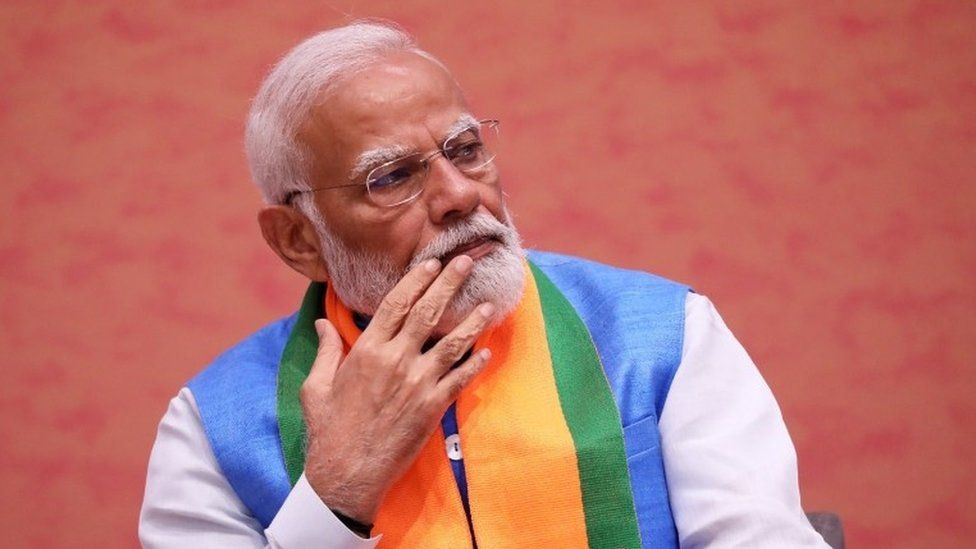As Prime Minister Narendra Modi turns 74, speculation is growing over whether he will follow through on a supposed promise to retire by the age of 75. The debate has gained traction, fuelled by both his political opponents and the shifting dynamics within the Bharatiya Janata Party (BJP). Arvind Kejriwal, Delhi’s Chief Minister and a vocal adversary of Modi, has previously brought this issue to the forefront. With Kejriwal himself entangled in legal troubles surrounding a money laundering case, his criticism has only intensified in recent months. However, beyond the noise created by opposition leaders, the question remains: Will Modi, the towering figure of Indian politics, step aside as he nears 75? And if he does, what does that mean for the BJP’s future? Modi’s influence over Indian politics is undeniable. As the face of the BJP, he has redefined India’s political landscape. Despite this, recent electoral performances have raised concerns within his party and among his supporters. In the most recent Lok Sabha polls, the BJP failed to secure a simple majority on its own, capping its tally at 240 seats—short of expectations. This decline, coupled with the upcoming state elections, has led some to wonder if Modi’s political star is fading. Assembly elections in critical states like Jammu and Kashmir, Haryana, Jharkhand, Maharashtra, and Bihar loom large. These contests could serve as bellwethers for the BJP’s future success, and for Modi’s continued dominance. In Haryana, where the BJP previously won 47 of 90 seats, there are doubts about whether the party can replicate its success. While Modi has already hit the campaign trail in the state, alongside Jammu, opposition parties—especially those aligned with the INDIA bloc—remain fragmented. This division within the opposition might ultimately prove advantageous for the BJP, allowing it to navigate through multi-cornered contests and retain power.

The situation in Jammu and Kashmir, however, presents a more complicated challenge. The delimitation exercise carried out in 2022 increased the number of Assembly seats from 87 to 90, with a notable shift in favour of Hindu-dominated Jammu. Jammu now holds 43 seats, compared to 47 in the Muslim-majority Kashmir Valley. This shift bolsters the BJP’s chances of making inroads in the region, particularly with nine seats reserved for Scheduled Tribes in Jammu. Modi’s party aims to contest 67 of the 90 seats, hoping to capitalize on a fractured opposition. In 2014, the BJP won 25 seats, primarily in Jammu. With the National Conference (NC), People’s Democratic Party (PDP), and smaller regional players competing for influence in the Valley, the BJP sees an opportunity to siphon votes away from the anti-NC-Congress electorate. But the party’s strategy extends beyond Jammu and Kashmir. The BJP is confident of retaining power in Jharkhand and Bihar, with the latter expected to see a contest in alliance with its regional partners. In Maharashtra, the BJP and the Shinde faction of the Shiv Sena may turn the tide against the Maha Vikas Aghadi (MVA) coalition, which made gains in the last Lok Sabha elections. Should the BJP retain its stronghold in these states, Modi’s position within the party—and the national political landscape—would likely remain secure, regardless of the speculation surrounding his future. What many critics fail to acknowledge is that Modi’s leadership extends beyond mere electoral victories. His personal integrity and reputation for honesty resonate with a significant segment of the electorate, a quality few of his predecessors have matched. His image on the global stage—cemented through high-profile diplomatic engagements and India’s increasing prominence in global forums—also bolsters his stature. This gives Modi a distinct advantage, not just within the BJP but also among India’s wider political class. His legacy, already monumental, remains intertwined with the party’s fortunes.
Even as Modi’s detractors hope for his retirement and the ensuing decline of the BJP, there are few within the party who would challenge his leadership. The truth is, Modi remains indispensable, not just to the BJP but also to the broader National Democratic Alliance (NDA). The NDA has long relied on Modi’s charisma and popularity to unite a diverse coalition of regional and national parties. Removing him from the equation could unravel that cohesion, a risk the BJP can ill afford as it gears up for the next round of state and national elections. Looking ahead, Modi’s decision to stay or step aside will undoubtedly shape the BJP’s trajectory. However, given the fragmented opposition, the party’s internal discipline, and Modi’s towering presence, it seems unlikely that India’s political landscape will see a drastic shift any time soon. Whether Modi chooses to remain at the helm or not, his influence over Indian politics—and the BJP’s continued dominance—will likely persist. The coming months will be crucial. As the BJP faces a series of electoral tests, Modi’s leadership will once again come under scrutiny. But even as his opponents speculate about his political future, Modi’s continued relevance is hard to dismiss. The BJP’s immediate fate may rest on these upcoming state elections, but Modi’s legacy appears far from written. Whether or not he steps down at 75, the larger question is whether anyone in Indian politics is truly ready to fill his shoes.





